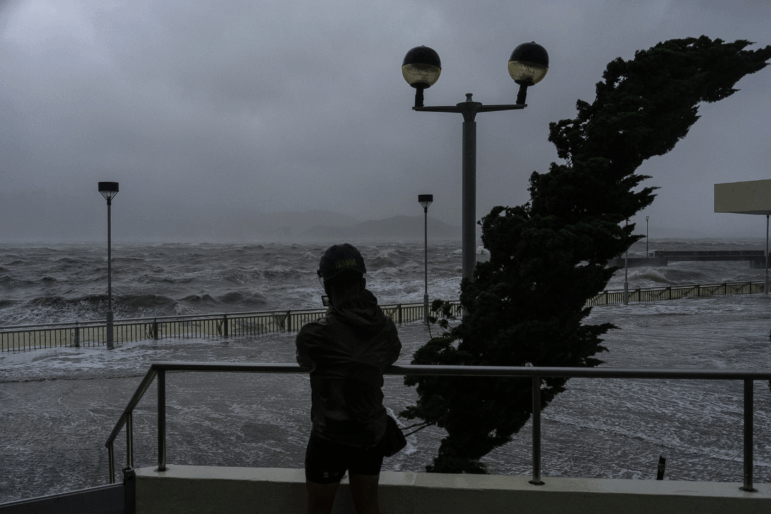SHENZHEN, China — Typhoon Ragasa, one of the strongest in years, whipped waves taller than lampposts onto Hong Kong promenades and turned seas rough on the southern Chinese coast on Wednesday after leaving deadly destruction in Taiwan and the Philippines.
In Taiwan, 14 people died in a flooded township, and 10 deaths were reported in the Philippines.
Nearly 1.9 million people were relocated across Guangdong province, the southern Chinese economic powerhouse. A weather station in Chuandao town recorded maximum gusts of 241 kph (about 150 mph) at noon, a high in Jiangmen city since record-keeping began. Huge waves battered Zhuhai city’s coastline and strong winds buffered trees under intense rain. Fallen branches were scattered on the streets.
The national weather agency forecast the severe typhoon would make landfall between the cities of Yangjiang and Zhanjiang on Wednesday evening. Schools, factories and transportation services were suspended in about a dozen cities.
The fierce winds, brought by Ragasa, once a super typhoon, woke Hong Kong residents in the early hours, and many went online to describe scenes like a kitchen ventilation fan being blown down and a crane swaying.
Strong winds blew away parts of a pedestrian bridge’s roof and knocked down hundreds of trees across the city. A vessel crashed into the shore, shattering a row of glass railings along the waterfront. Areas around some rivers and promenades were flooded, including cycling lanes and playgrounds. At several promenade restaurants, furniture was scattered chaotically by the winds. Over 60 injured people were treated at hospitals.
A video that showed waves of water crashing through the doors of a hotel and flooding its interiors went viral in the financial hub. The hotel has not immediately commented on the incident. But staff were seen cleaning up the lobby, with parts of its exterior damaged.
Hong Kong and Macao, a nearby casino hub, canceled schools and flights, with many shops closed. Hundreds of people sought refuge in temporary centers in each city. Streets in Macao turned into streams with various debris floating on the water. Rescue crews deployed inflatable boats to save those who were trapped. The gambling city’s local electricity supplier suspended its power supply in some flooded, low-lying areas for safety.
As winds gradually weakened in the afternoon, a few cities distant from the expected landfall location were preparing to resume normal operations.
Hong Kong’s observatory said Ragasa had maximum sustained winds near the center of about 195 kph (120 mph) and skirted around 100 kilometers (62 miles) to the south of the financial hub. The city categorizes cyclones with sustained winds 185 kph or stronger as super typhoons to make residents extra vigilant about intense storms.
The observatory said Ragasa is the strongest tropical cyclone in the northwestern Pacific and South China Sea region so far this year. Preliminary analysis showed it also ranks as the second-strongest one in the South China Sea region since the observatory’s record-keeping began in 1950, tying with typhoons Saola in 2023 and Yagi in 2024, it said.
Ragasa earlier caused deaths and damage in Taiwan and the Philippines after the typhoon took a path between them.
In Taiwan, heavy rain caused a barrier lake in Hualien County to overflow Tuesday and torrents of muddy water destroyed a bridge, turning roads in Guangfu township into churning rivers that carried vehicles and furniture away. Guangfu has about 8,450 people, more than half of whom sought safety on higher floors of their homes or on higher ground. Local authorities said 14 people died and contact was lost with 124 others in the township. Taiwan’s Central News Agency said rescuers were going door-to-door to check on these residents.
Separately, 34 people were injured across the self-ruled island.
At least 10 deaths were reported in the Philippines, including seven fishermen who drowned after their boat was battered by huge waves and fierce wind and flipped over on Monday off Santa Ana town in northern Cagayan province. Five other fishermen remained missing, provincial officials said.
Nearly 700,000 people were affected by the onslaught in the main northern Philippine region of Luzon, including 25,000 people who who fled to government emergency shelters.

